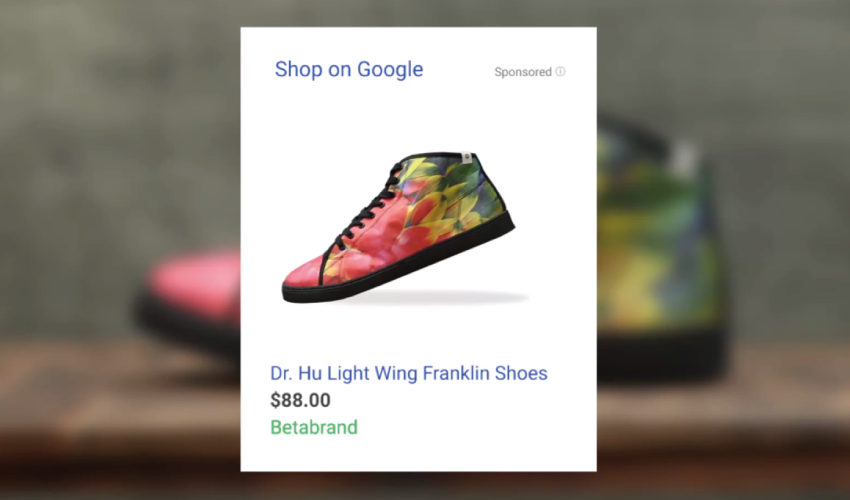Share This Article
When it comes to the exciting world of online advertising and all the possibilities that exist throughout the network, it is nothing new to say that Google is the king.
Not only because they monopolise almost the entirety of the online advertising market, but because they offer more and better formats and systems so that any business is able to promote itself.
Google Shopping is one of the least-used e-commerce methods but one which is very effective. We explain what Google Shopping is in another post, but today we’ll talk about some of the keys to differentiating our campaigns from the competition, with the aim of making our ads look more attractive so they will generate more sales.
Before getting into these tips and tricks, it is important to emphasise that when we use Google Shopping this is not the same as Google Ads. There are details that make a difference, so if we are planning to invest in both Shopping and Google Ads, we would not go about these two in exactly the same way.
We will now review some of the tricks for making our Google Shopping campaign a success.
Study the market
If we do not know how the market or the completion operate for the product we are selling, we will never hit on the right Google Shopping campaign. In order to have all the information we need, we’ll need to do a thorough market analysis where we weigh up all the possible variables.
Doing a full market study is not complicated, but it does take time. The following are the key points:
- Google results: do general and more specific searches about the products you want to highlight in your Google Shopping campaign. Depending on the results you see, you’ll know whether bidding for those words will be profitable or not.
- Competition prices: you’ll also need to take a look at the prices being advertised by the competition. If you see that they are lower than yours, it logically wouldn’t be worth bidding for that product for our Google Shopping campaign. But regarding final prices, they are often not the same as those that are initially seen by the customer, which might cause a rebound in your favour.
- Number of advertisers: with all Google Shopping results you can also see the competition bidding for similar words to the ones you want to use. If in doubt, always go for the products that less advertisers have, so you will have higher chances of getting sales.
- Quality of advertisers: finally, another point to remember is what kind of competitors your ads are going to have. If the results include large well-known stores, it is very unlikely that you’ll be able to attract sales, so we suggest not wasting your time and investment on those particular products.
Choose the products you are going to sell based on the competition
This second trick is very much related to what we mentioned in the previous section. The competition and the market study that we did will be key in terms of choosing which products we plan on selling through Google Shopping and whether or not they will have potential future sales. Choosing a good data feed from Google Shopping will be essential for getting good results.
Establish your keywords for the products
Once we have done our selection, it’s time to correctly optimise the Google Shopping campaign to appear in the maximum possible number of searches.
To do this you first need to determine what are the most appropriate keywords in order for prospective buyers to find your product in Google Shopping, and adapt them to the main descriptive texts, which are the title and description.
If you write the keywords in the title and description, your product will show up in searches. But if you really want to attract clicks and potential sales, you also have to be creative with the texts as well as the images.
For example, we can compare these two results when searching with “buy headphones” in Google:
Take a good look at the two results, which one would you use? But above all you should ask yourself why. Taking all this into account you can then ask yourself the following questions before writing the titles and descriptions:
- Is the image of my product attractive as well as descriptive?
- Does the title of my product reflect what the product is? (“Metal Headset with mic” vs “JBL by Harman T-110 black”)
- Does the description provide useful and comprehensible information even if it is technical?
- And finally, can my PVP compete with my competitors?
Fill in the data feed
The more complete the information your campaign has about the products, the more likely it is that you will appear in the Google Shopping results. At a minimum, the following information must be completed in detail:
- Title
- Description
- Link to where the product is
- Condition (new, second-hand…)
- Price
- Availability
- Brand
- Unique product identifier or GTIN.
Get positive opinions
Another very differentiating element that can be important when it comes to generating sales is the use of reviews and positive opinions about our products. It is important to keep that in mind in our Google Shopping campaigns.
A user will always trust those products that have already been tested by other users rather than the product information itself, so it is advisable to encourage your customers to positively rate their experience with your online store.
Adjust bids based on days and hours
A common mistake is to create our Google Shopping campaign, set it to go out every day at all hours but then forget to manage it. It is important to see our user’s buying trends, especially the days and times when they buy from us so that we can adjust our campaign to emphasise those moments of the day and week which show the most activity.
According to studies, one of the most productive parts of the week is on Sunday afternoons, especially in winter, since in summertime consumers usually like to be out of their homes. Working days during the week up until lunch time are also peak times.
Analyse the results and try again
Before we start analysing, we recommend letting the first version of the campaign run for at least one week in order to see how it works each day, unless we notice a serious problem which we would have to sort out immediately.
Of course, none of the above will help if we launch our Google Shopping campaign and then fail to analyse the results. Logic often doesn’t work when it comes to figuring out why the results were not as we had hoped for. It’ll be up to us to think about, observe and analyse everything we did and the reasons why we believe it didn’t work well and then to have another go at it.
If you follow all our advice you’ll have a great chance of success with Google Shopping,…..so go for it!





 Contact
Contact





